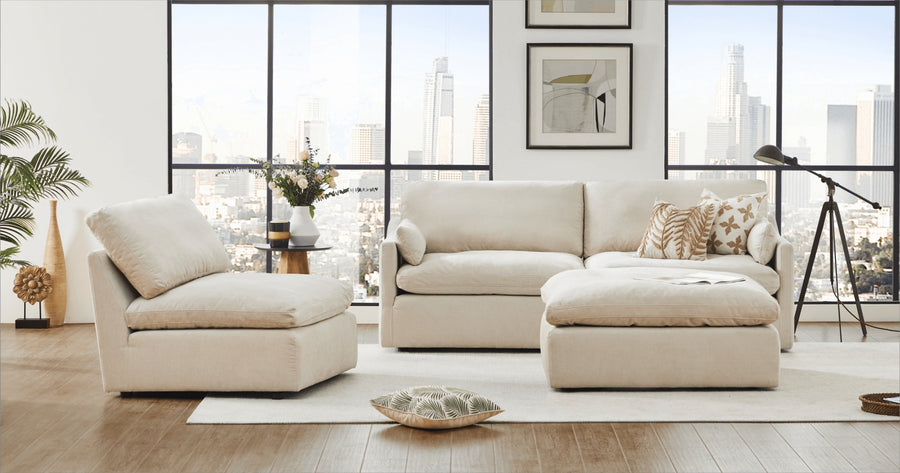Unlock the Perfect Modular Sofa: Discover What You Need to Know Before You Buy!
In the world of interior design, the modular sofa has surged in popularity, becoming a staple in modern homes. These innovative pieces of furniture offer unparalleled flexibility, allowing homeowners to customize their seating arrangements to fit their unique lifestyles and spaces. With modular sofas, you can easily rearrange sections to accommodate gatherings of friends or transform your living room layout whenever inspiration strikes. This article aims to guide you through the essential features, styles, and price ranges of modular sofas, ensuring that you make an informed decision before your purchase. Whether you’re looking to enhance a cozy corner or create a spacious lounge area, understanding these key aspects will help you unlock the perfect modular sofa for your home.

Understanding Modular Sofas
Modular sofas are designed as individual components that can be connected or separated to create various configurations. Unlike traditional sofas, which typically come as a single piece, modular sofas offer the versatility to be rearranged based on your needs. This unique characteristic makes them ideal for both small apartments, where maximizing space is crucial, and larger living areas that benefit from adaptable layouts. For instance, a friend of mine recently transformed her compact apartment by integrating a modular sofa that she can easily shift from a sofa bed to a sectional for entertaining guests. This adaptability allows homeowners to tailor their furniture to their lifestyle, providing the freedom to experiment with different setups over time.
Features to Consider When Buying a Modular Sofa
When it comes to selecting a modular sofa, several key features should be at the forefront of your decision-making process. First, consider the material options available, such as fabric and leather. Each material offers distinct advantages: fabric sofas tend to be softer and available in a wider range of colors and patterns, while leather options often provide a sleek, sophisticated look and are easier to clean. Additionally, pay attention to the cushioning types—high-density foam versus down-filled cushions can significantly affect comfort and durability. The frame construction is equally crucial; robust materials like hardwood will ensure longevity. A friend of mine learned this the hard way when she purchased a cheaper modular sofa that sagged after just a year of use. It’s essential to prioritize durability and maintenance, as these factors will not only affect the lifespan of your sofa but also your overall satisfaction.
Styles of Modular Sofas
Modular sofas come in a variety of styles, each influencing the overall aesthetic of your living space. Contemporary designs often feature clean lines and minimalistic aesthetics, making them perfect for modern homes. On the other hand, classic styles might include tufted upholstery and more ornate details, appealing to those with traditional tastes. It's essential to consider how the style of your modular sofa will complement your existing decor. For instance, if you favor a minimalist approach, a simple, neutral-colored modular sofa will seamlessly blend into your space, while a bold, patterned option can serve as a statement piece. When my sister was redecorating her living room, she spent hours choosing a modular sofa that not only matched her chic style but also provided the flexibility she needed for entertaining. Your personal taste should guide your selection to ensure that the sofa enhances the character of your home.
Price Range and Budgeting for Modular Sofas
Pricing for modular sofas can vary widely based on several factors, including size, materials, and the reputation of the manufacturer. Generally, you can expect to find modular sofas ranging from budget-friendly options to more luxurious choices. Larger configurations and high-quality materials will often demand higher prices, while simpler designs may fit more modest budgets. It’s important to set a budget before you start shopping and remain flexible as you navigate your options. A friend of mine, who recently bought a modular sofa, learned the importance of budgeting when she discovered that the custom fabric she loved pushed her total significantly over her initial plan. To avoid surprises, consider researching and comparing prices across different retailers, and don’t hesitate to explore sales or second-hand options. This diligence will help you find a modular sofa that fits your wallet as well as your living space.
Making an Informed Choice for Your Modular Sofa
In summary, when searching for the perfect modular sofa, it's crucial to consider the features, styles, and budget that best align with your needs. Understanding the unique characteristics of modular sofas will empower you to make an informed decision that enhances your living space. Take your time to explore various options, whether it’s the material, configuration, or style that catches your eye. Remember, investing in a modular sofa is not just about purchasing furniture—it’s about creating a versatile, inviting space that reflects your personality and accommodates your lifestyle. Happy sofa hunting!








